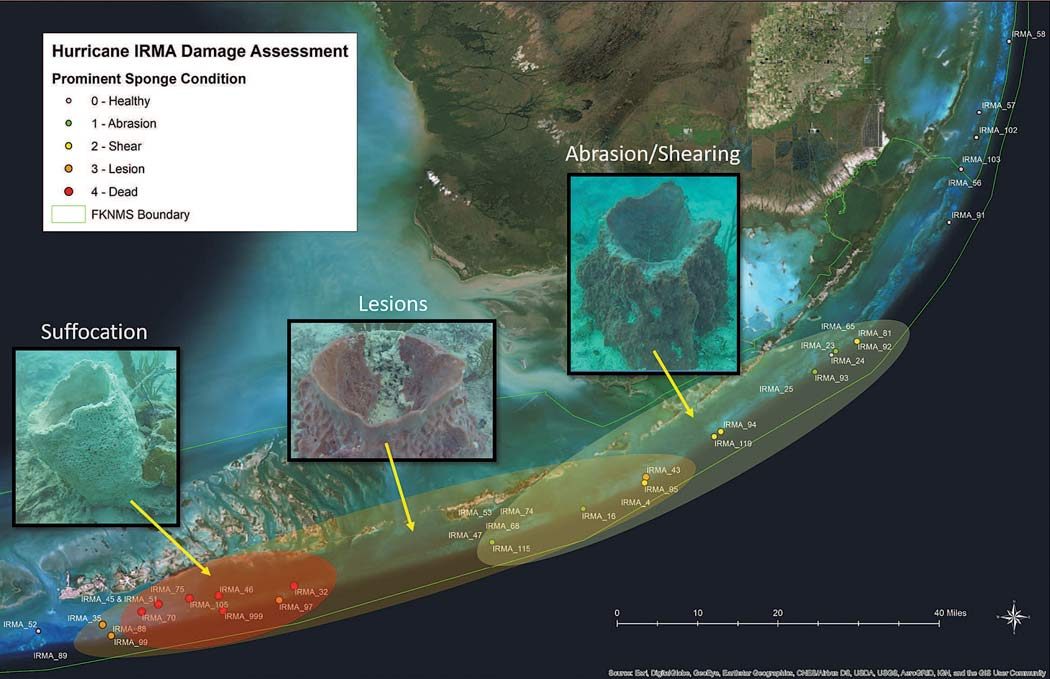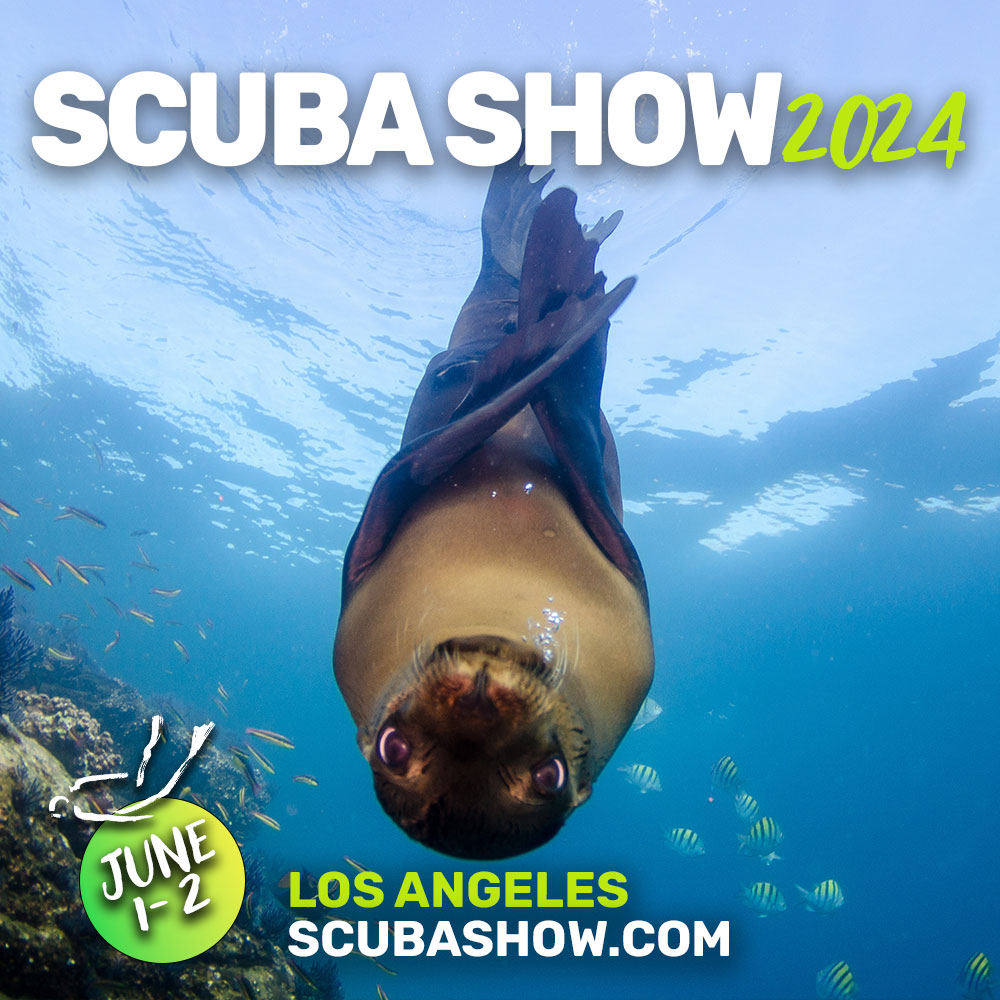Divers can assist the Florida Keys National Marine Sanctuary in assessing damage done to the sensitive ecosystem by Hurricane Irma. The Category 4 storm passed through the island chain on September 10, 2017 breaking fragile coral, uprooting sponges, stirring up fine sand and blanketing the seafloor with sediment. Recovery efforts by both nature and man are ongoing.
A mission led by the National Oceanic and Atmospheric Administration (NOAA) identified damaged areas of the reef that would benefit from emergency response including repositioning and reattaching corals. The rapid assessment in the sanctuary surveyed 57 high-priority sites, a relatively small portion of the Florida Reef Tract, which stretches from Dry Tortugas National Park to the St. Lucie Inlet in Martin County.
Science divers found severe impacts at 14 percent of the sites, primarily off the Middle and Lower Keys where the eyewall crossed. Yet, the majority of the reef (53 percent) fared well considering the strength of the expansive storm.
Waves and surge pulled sand from Florida Bay and lifted sediment from the deeper Atlantic. Sponge mortality is widespread due to fine sediment clogging the pours of the filter feeders. Sedimentation and unsettled sand continue to slow recovery through much of the sanctuary’s 2,900 square nautical miles.
Nearly 1,800 damaged vessels that pose environmental and navigational hazards are being removed by a Unified Command led by the U.S. Coast Guard and supported by the sanctuary. However, marine debris remains an issue. Florida Keys fishermen estimate losing 150,000 lobster traps, many of which will continue to ghost fish until they are retrieved or rot and fall apart. Other marine and household debris litters the sensitive ecosystem.
NOAA, with its partners, continues the first-time-of-its-kind emergency response to a natural weather event by stabilizing corals to give them a greater chance of survival. The massive collaborative effort was undertaken due to the sheer size and force of Hurricane Irma and the fact that Florida’s coral reef tract, home to seven threatened species, was already under stress from other natural factors.
Those involved in the rapid assessment and recovery effort are the Florida Keys National Marine Sanctuary, Office of National Marine Sanctuaries, NOAA Fisheries Habitat Conservation, Restoration Center and Southeast Regional Office, National Centers for Coastal Ocean Science and the Office for Coastal Management’s Coral Reef Conservation Program, Florida Department of Environmental Protection, Florida Fish and Wildlife Conservation Commission, National Park Service, Nova Southeastern University, Coral Restoration Foundation, The Nature Conservancy and Florida Aquarium Center for Conservation with funding from the National Fish and Wildlife Foundation.
NOAA will also continue to support short- and long-range restoration efforts by working with long-standing partners to find, grow and transplant more resilient types of corals.
Visitors to the Florida Keys National Marine Sanctuary can help by reporting what they see, including the locations of marine debris, coral disease and invasive species such as lionfish. The sanctuary partners with Mote Marine Laboratory and Aquarium using the Community-based Observations of Coastal Ecosystems and Assessment Network (C-OCEAN), an online reporting tool designed to help the scientific community better understand events that adversely affect marine organisms. The simple form can be accessed at mote.org/research/program/coral-reef-science-monitoring/marine-observers-form.
For more information on the Florida Keys National Marine Sanctuary, visit floridakeys.noaa.gov and find a listing of sanctuary-recognized Blue Star dive operators at floridakeys.noaa.gov/onthewater/bluestar.html. Blue Star operators take the extra step to educate divers to be better environmental stewards and to interact responsibly with coral reefs.





